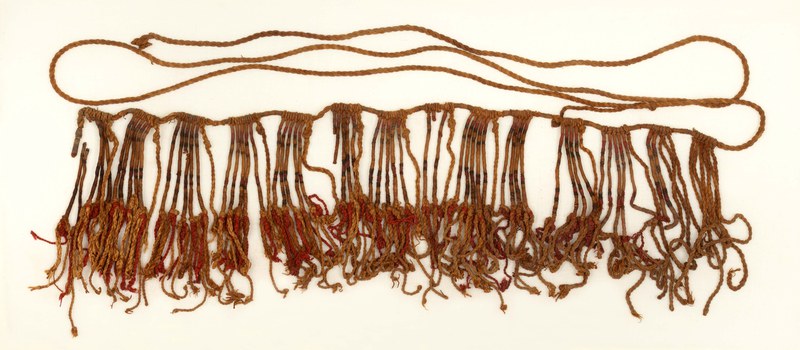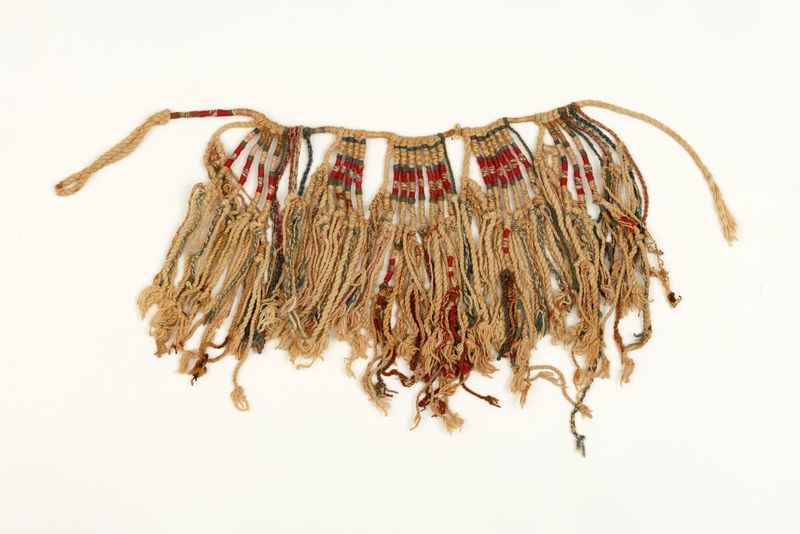
Wari Khipus (600–1000 CE)
“Lo otro es que más torpes estamos nosotros en entender la manera de los libros de ellos, que no ellos en entender los nuestros, pues ha más de setenta años que tratamos entre ellos y nunca acabamos de saber la traza y reglas de sus ñudos y cuentas.” (Garcilazo de la Vega 1960 [1609-1617]: 139)
“We moreover are slower in understanding their books than they in following ours; for we have been dealing with them for more than seventy years without ever learning the theory and rules of their knots and accounts.” (Garcilazo de la Vega 1966 [1609–1617]: 823–824)
The earliest known khipus were made by the Wari, a civilization centered in the Peruvian highlands. Distinguished by their use of wrapping and brightly colored yarns incorporating dyed and natural fibers, Wari khipus always place overhand knots close to cord attachments. Wari khipu cords typically have a Z twist. Most pendant cords are natural cotton, while subsidiary cords tend to be colored. Despite variations in cord length and diameter or yarn structure, consistencies in wrapping patterns and knotting practices suggest the presence of specialists who shared conventionalized values in the construction and use of khipus. In the absence of eyewitness accounts—no Spanish chroniclers encountered the Wari—our understanding of Wari khipus is largely inferred from what we know about Inka and later khipus.
There are at least three types of Wari khipus: loop and branch, pendant, and wrapped main cord. In loop and branch, pendant cords are attached directly to a loop made of a separate cord. Pendant type is very similar to Inka khipus, exhibiting a thicker main cord to which pendant cords are attached. Wrapped-main-cord khipus have main cords that are wrapped in the gaps between pendant cord groups. Both pendant and wrapped-main-cord type khipus usually begin with a loop formed from an extension of the main cord.
Numerical System
Wari people recorded numbers through knots very differently than the Inka, who placed knots in tiered, decimal registers and used the concept of zero. We do not know what numerical system (base) the Wari used. In this diagram, the number of knots on the first pendant cord’s subsidiaries are equal to the number of knots on the subsidiary cords of the same color in the rest of the group. The numbers associated with the first pendant cord’s subsidiaries do not exceed eight, strongly implying the use of a base-10 numerical system. Conversely, most other subsidiary cords have either one or two knots, suggesting the simultaneous use of a base-10 system to record quantities and a binary system using ones and twos.




